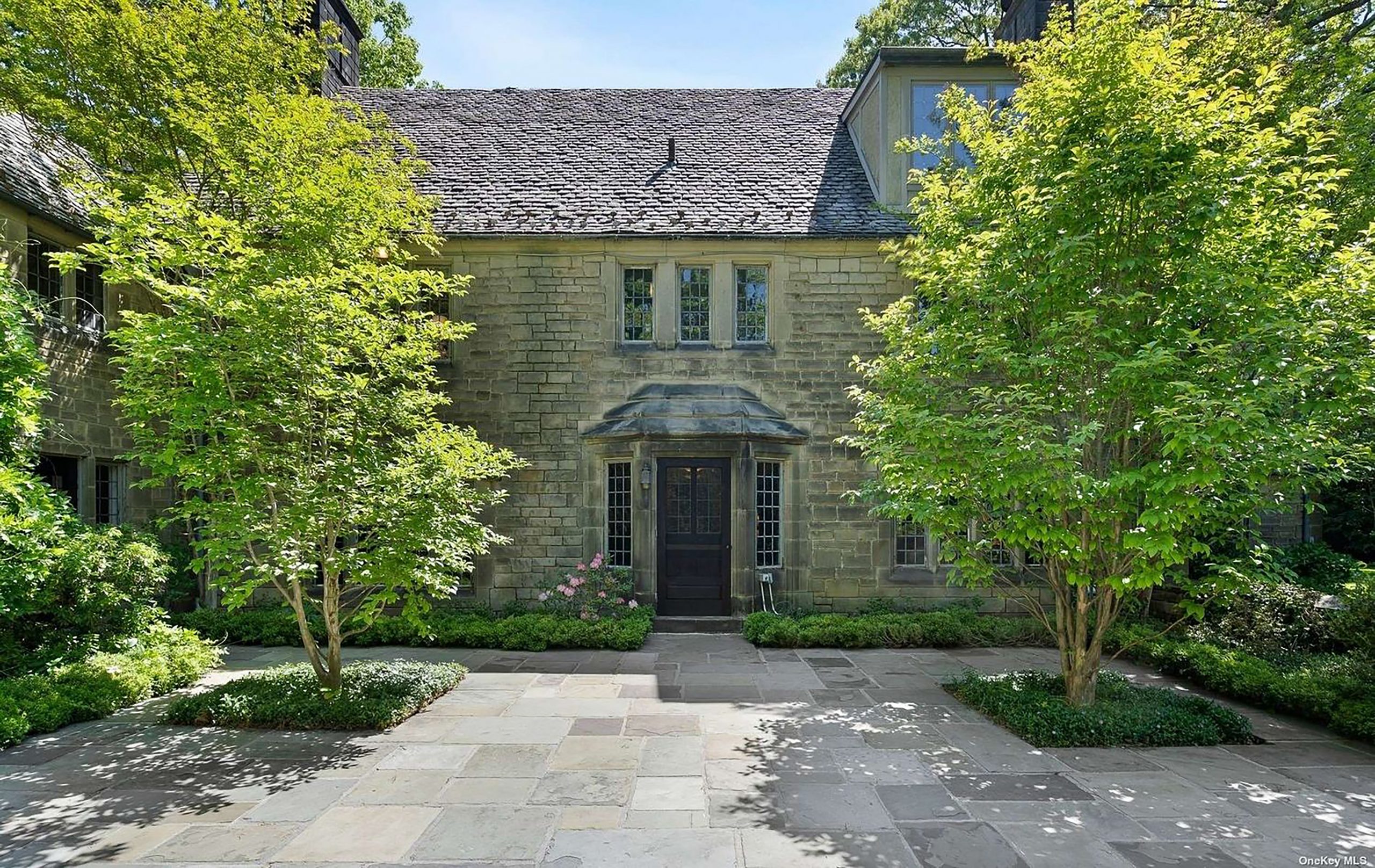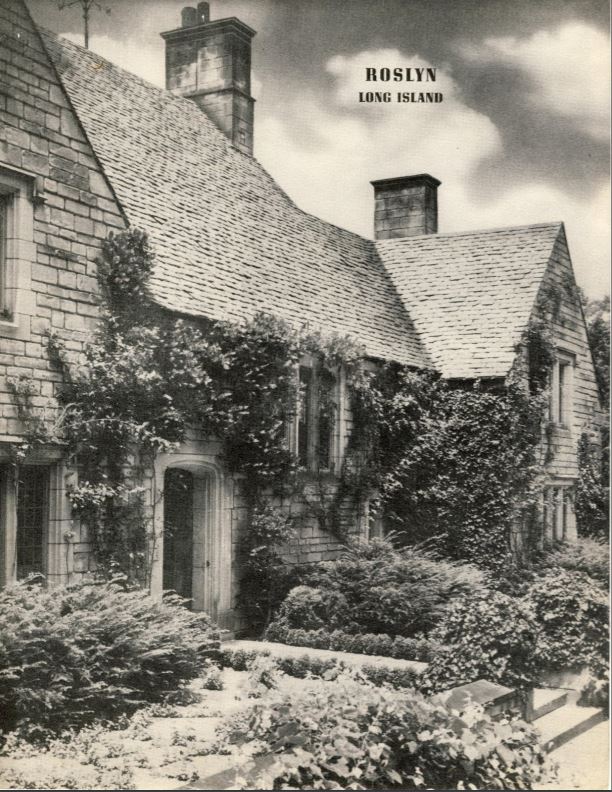SAVED!
In September of 2021, the Village of East Hills reached an agreement with the former owners of John Mackay III’s Happy House to preserve the property’s significant historic resources. Previously, the property faced demolition and redevelopment as a new four-lot subdivision. Thanks to the agreement, the historic house is now protected by preservation covenants and a more sensitive two-lot subdivision was approved instead of the original four-lot proposal.
Some readers might be surprised to learn that this outcome had nothing to do with the village landmark ordinance—in fact, East Hills does not have one. Happy House was saved by another law, the New York State Environmental Quality Review Act (SEQRA), and by the village’s commitment to conducting a comprehensive environmental review as mandated by SEQRA. The resulting agreement emerged from a rigorous review process, including the preparation of a detailed Environmental Impact Statement (EIS), acknowledgement of the concerns of local community members, and identification of more sensitive alternatives to the four-lot subdivision as initially proposed.
We applaud the exemplary efforts of community members and village officials, especially Mayor Michael Koblenz, the Village Trustees, and the Planning Board. We also thank our colleagues at the Roslyn Landmarks Society who organized the local advocacy efforts and sponsored the property’s listing as one of Preservation Long Island’s 2021 Endangered Historic Places. We hope the Happy House agreement will inspire other municipal governments to improve local preservation outcomes by pursuing more comprehensive processes of review.

What to support historic preservation in your community? Please ask your local government officials to consider taking these steps towards enhancing the process of environmental review:
• Regular training and more resources to support the work of local review boards (e.g., Planning Board, Zoning Board of Appeals, and Architectural Review Board). New York State’s Department of State offers free training on SEQRA and Historic Preservation to municipalities: https://dos.ny.gov/training-assistance
• Require applicants seeking approval for subdivisions, variances, and other projects to fully consider all viable alternatives that meaningfully avoid or mitigate adverse impacts on local resources.
• Encourage greater public participation in local hearings, especially for environmental review involving intensive redevelopment, like subdivisions or multiple variances. Hearings also provide meaningful opportunities for the residents to participate in processes of review for new local infrastructure or commercial facilities like telecommunications towers, energy plants, or waste disposal sites.
• Better educate local residents about SEQRA. Many Long Islanders do not realize that historic and cultural resources are defined as aspects of the environment under SEQRA: “‘Environment’ means the physical conditions that will be affected by a proposed action, including land, air, water, minerals, flora, fauna, noise, resources of agricultural, archeological, historic or aesthetic significance, existing patterns of population concentration, distribution or growth, existing community or neighborhood character, and human health” (see 6 NYCRR Part 617.2 Definitions)
• Adopt a local historic preservation ordinance
Why is “Happy House” historically significant?
This Tudor Revival-style house was built in 1929 for John W. Mackay III (1907–1988), the son of telecommunications mogul Clarence Mackay (1874–1938) and the grandson of John Mackay (1831–1902), who discovered the Nevada Comstock Lode in 1873. The house was designed by John W. Cross of the renowned New York City-based architecture firm Cross and Cross.
With strong ties to the influential Mackay family and their Gilded Age estates, “Happy House” represents an extraordinary piece of local, regional, and national history. This site was determined eligible for listing on the National Register of Historic Places in 2017.

Why is Happy House endangered?
This site is threatened by demolition and intensive redevelopment. Recently, a proposal to demolish “Happy House” and build a new four-lot subdivision was denied by East Hills Village Planning Board in January 2021. Instead of the proposed demolition, the Planning Board recommended a two- or three-lot alternative site plan to preserve the historic house and minimize other adverse environmental impacts. These recommendations were based upon clear findings of adverse impacts identified by an Environmental Impact Statement (EIS) mandated by New York State Environmental Quality Review (SEQR). However, future proposals for demolition and/or intensive redevelopment remain a possibility for this and other historic properties within the village.
How can Happy House be preserved?
Preservation Long Island joins our local partners at the Roslyn Landmark Society in advocating for the following actions to preserve this site and others facing similar threats:
• Support local decision-makers in East Hills and across Long Island in considering alternatives to intensive redevelopment that minimize adverse impacts on historic resources in our communities.
• Increase public participation in local processes of review, especially for applications involving subdivision, demolition, and intensive redevelopment.
• Better educate the public about SEQRA. We note many people are not aware that historic and cultural resources are defined as part of the environment under SEQR: “‘Environment’ means the physical conditions that will be affected by a proposed action, including land, air, water, minerals, flora, fauna, noise, resources of agricultural, archeological, historic or aesthetic significance, existing patterns of population concentration, distribution or growth, existing community or neighborhood character, and human health.” (see 6 NYCRR Part 617.2 Definitions)
• Adopt a local historic preservation ordinance in the Village of East Hills to protect historic resources from further destruction.
Preservation Long Island’s Endangered Historic Places Program is made possible in part by a grant from the New York State Council on the Arts with the support of Governor Andrew M. Cuomo and the New York State Legislature.




